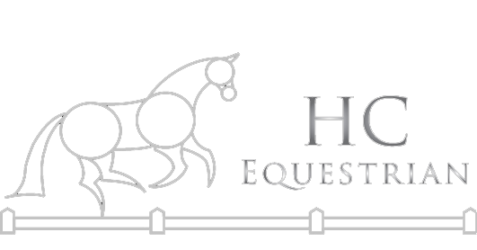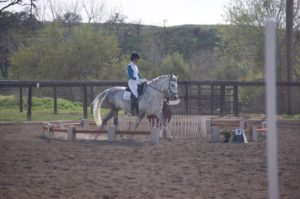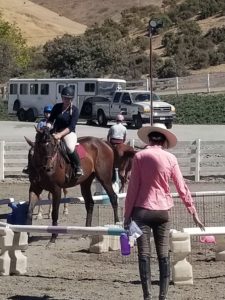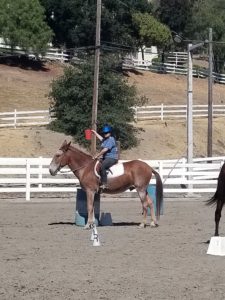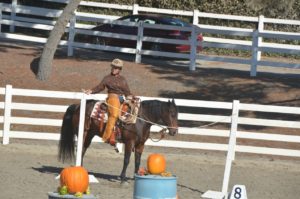Working Equitation is one of the fastest growing equestrian sports in the US. It includes a dressage phase, and an obstacle phase judged like a dressage test (called ease of handling). The upper levels include a third phase, obstacles at speed. Some shows even have a fourth cattle working phase! I describe it as a combination of dressage and gymkhana, with a dash of trail classes and a hint of jumpers.
One thing I really like about Working Equitation (WE) is that there is no set dress code. You can show up in western gear, dressage gear, or traditional Spanish gear. You can rock the look of any discipline! I’ve seen the classic hunter look, and I even saw a jousting horse and rider rock their look at a horse show (no armor though). All you have to do is pick a theme, and stick to it. Good riding is good riding, no matter what your butt liner looks like. Working equitation gets that.
Sounds like a blast, right? But what if there are no opportunities to do working equitation in your area? YOU can change that! Here’s what I did:
Step One: Learn How to do Ease of Handling
I already know how to do dressage, but Ease of Handling was something I’d only seen on the internet. (Any dressage instructor should be able to teach you the basics for WE dressage). I studied up on working equitation online, the weunited.us rulebook was a great how-to manual to get me started. I was lucky enough to find an EOH clinic that was not too far away. I took seven lessons (on five different horses) with working equitation superstar, Carlos Carniero. I found a working equitation schooling show 4 hours away, and went there to learn more. Both the judge and organizer of the show helped me learn more and answered all my questions. I also got to know some of the other competitors who would become allies in helping me grow the sport in my area.
At the schooling show, I brought a small cadre of clients with me. These intrepid souls were ready to go on this journey with me, and encouraged me along this path. My students were happy to try something different and enriching for their horses. We had a great experience, but it was a long journey. We all wanted to do more, but closer to home.
Step 2: Build your obstacles
I took a “Field of Dreams” approach. Build it, and they will come. So over 6 months I set to assembling my obstacles. I won’t lie, I did it on the cheap. My handy husband helped me with a lot of it, and there were many places where I tried to re-purpose items that I already had. I had friends and relatives source some parts for me. I did have one item specially made, a gorgeous arched bridge that can be moved by hand.
The rulebook at weunited.us has specs for the obstacles, and I was also able to get ideas from the organizer of the clinic I went to, and the manager of the schooling show I attended. I also looked on you tube and Facebook groups for tutorials and design ideas that would work for me.
Step 3: Plan a schooling show…to be held in three months
It may seem like I’m skipping way ahead by putting a show as step two in this plan, but hear me out. It takes quite a while to organize a quality show. It’s important that your show is well run, and a positive experience for everyone. It takes time to plan, but luckily for you, the weunited.us website has a checklist for things you need to do to organize the show. There are lots of items on the list, but everything is obtainable! You can skip some of the steps for schooling shows too.
Many people will be motivated to learn about WE by having a casual show in their area to participate in. Some will want to watch a show before trying it for themselves. Either way, the show will benefit your cause to grow WE in your area.
Step 4: Utilize social media
I had to get the word out about the show, so I turned to social media. There were groups on Facebook for WE in the North Bay Area, and Central California, but none that incorporated my area (the south and east SF bay area). I checked in with the others I’d met in my area that wanted to see WE grow. They thought it was a good idea to form a Facebook group, so I created Greater Bay Area Working Equitation. (If you are interested in upcoming WE in our area, go join this group now!)
I got the word out about my new facebook group by announcing it on all the statewide and national working equitation facebook pages I could find. I also contacted WE United to get my show on their activity calendar.
Step 5: Teach others what you know
As we got closer to the show, I realized that while there is interest in working equitation, not a lot of people in the area knew how to do it. I figured I could host a clinic and teach them how. I set a date, and shared it on the facebook page I created, as well as with the weunited.us calendar. I reached out to the local pony club, I know they are always game to teach their membership something new. They sent all their kids to my first clinic! I filled the clinic date, and ended up teaching a second clinic for those with conflicts on the first date.
In all, I taught twenty-two people at these clinics. A few of them even did both dates. Most were first timers. Some were more experienced and it was fun to help them too! The experienced WE competitors were happy to share their experience with how things are done in bigger competitions than I had seen. Participants brought auditors, who I put to work as ring crew. I met a lot of really lovely people.
Some of my students at the clinic were professionals with their own training businesses. I loved getting to know other leaders in the industry, and hopeful that they will take what they learne d back to their students to create more interest in WE.
I structured my clinics to include all the WE obstacles in the Ease of Handling. I got everyone ready to compete in the EOH phase by the end of their lesson. I ended up doing private dressage lessons for half the participants who were new to dressage. This is how I found enough people to fill my show!
Step 6: Have the show
Custom Saddlery and Kathie’s Cinches & More sponsored the show so we had some cool prizes. I had tremendous support from Indian Hills Ranch, and so many terrific volunteers that helped the show run very smoothly. We were able to create a positive and fun show experience.
We had a one day show, with one show arena. That means that we had to pull out the dressage court and set up the obstacles in the middle of the show. It would have been daunting, except that just about every competitor and spectator helped out! We were able to undress and redress the arena in about 45 minutes.
Step 7: Keep it going!
The show created even more interest in working equitation as competitors posted their photos and positive experience on social media. I’m happy to report that I was asked to conduct a clinic at a venue an hour away from me. The clinic filled 18 spots in less than a week! People want to do Working Equitation, and are eager to learn.
Through this process, I’m constantly in awe of community. I’ve met so many great people along the way in this journey. I’ve learned a lot, formed friendships, and gained resources. The dressage, eventing, pony club, cowboy dressage, and existing WE communities have supported my energies and endeavors 100%. I’m grateful to all the communities and individuals involved for helping me. I’m confident that you will have a similar experience when you create a working equitation community in your area!
—–
About the author:
Ali Kermeen has a training business, HC Equestrian, in Milpitas, California. She loves doing all sorts of things with horses, and has students competing in 8 different disciplines. In 2019 Ali wants to show more in working equitation, so she’s hopeful that someone else will organize a show in her area so that she can ride! Ali is available to come to your location for clinics, and will even bring her own obstacles if you are relatively nearby. Contact her at [email protected] and follow Ali on Instagram @happycanterer

